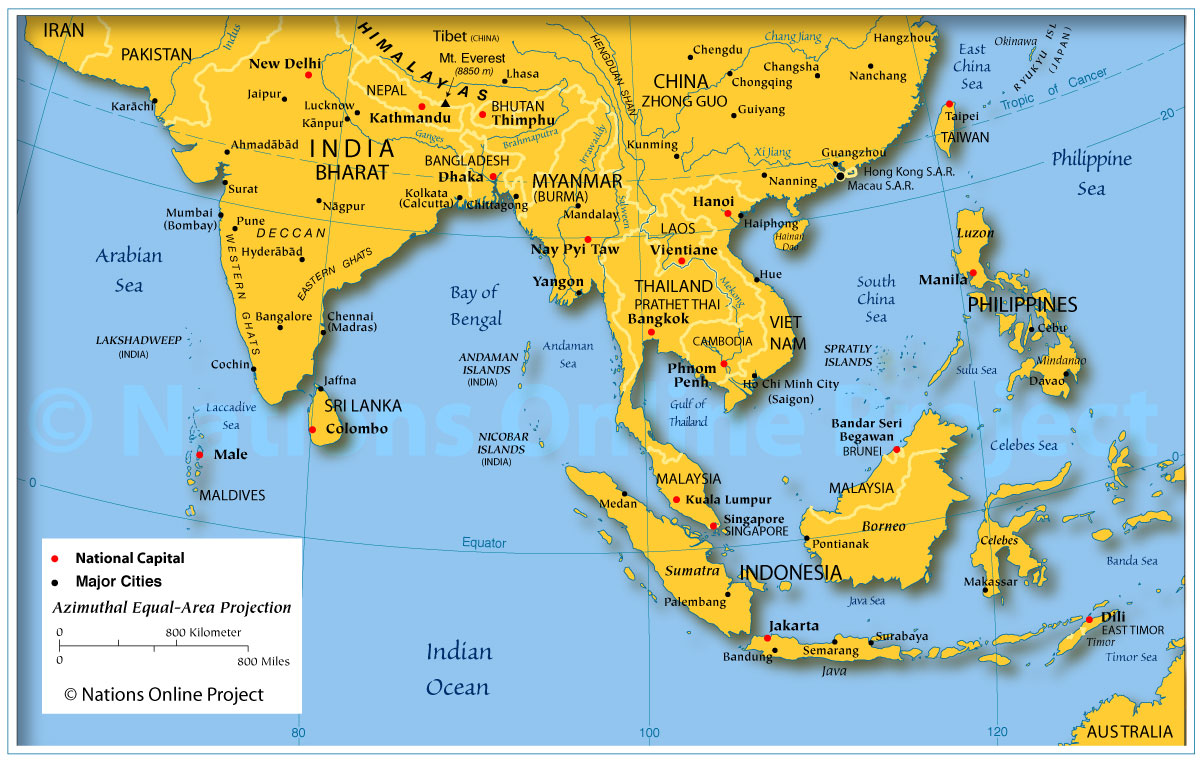These MCQs are based on Today’s Targets given here
1. Teak, Sal, Peepal, Neem grow in these forest and have succulent stems to conserve water
2. Leaves are mostly thick and small to minimize evaporation
3. Trees are scattered and have long roots penetrating deep into the soil in order to get moisture
4. It is found in the north-western part of the country including semi-arid areas of Gujarat, Rajasthan, MP, Chhattisgarh, UP and Haryana
Which of the statements are correct. Select the correct answer using the code given below:
a) 1, 2 and 3 only
b) 1, 2 and 4 only
c) 1, 3 and 4 only
d) 2, 3 and 4 only
Ans. D
Explanation: In regions with less than 70 cm of rainfall, the natural vegetation consists of thorny trees and bushes. This type of vegetation is found in the north-western part of the country including semi-arid areas of Gujarat, Rajasthan, Madhya Pradesh, Chhattisgarh, Uttar Pradesh and Haryana. Acacias, palms, euphorbias and cacti are the main plant species. Trees are scattered and have long roots penetrating deep into the soil in order to get moisture. The stems are succulent to conserve water. Leaves are mostly thick and small to minimize evaporation. These forests give way to thorn forests and scrubs in arid areas. Hence statement 1 is not correct. Answer is D.
Source: NCERT 9th: Geography, Chapter 5, Page 46
Q.2) Consider the following statements:
1. Seasonal contrasts in temperature are more in the interior of the country and less in the coastal areas.
2. In the Northern Plains rainfall generally decreases from west to east.
Select the correct answer using the code given below:
a) 1 only
b) 2 only
c) Both 1 and 2
d) Neither 1 nor 2
Ans. A
Explanation: In general, coastal areas experience less contrasts in temperature conditions. Seasonal contrasts are more in the interior of the country. There is decrease in rainfall generally from east to west in the Northern Plains. These variations have given rise to variety in lives of people – in terms of the food they eat, the clothes they wear and also the kind of houses they live in.
Source: NCERT 9th: Geography, Chapter 4, Page 27
Q.3) The Coriolis force is responsible for deflecting winds towards the right in the northern hemisphere and towards the left in the southern hemisphere. Coriolis force is caused due to:
a) Friction between moving air and earth surface
b) Pressure differntial
c) Earths rotation at its axis
d) Revolution of earth around the Sun
Ans. C
Explanation: Coriolis force: An apparent force caused by the earth’s rotation. The Coriolis force is responsible for deflecting winds towards the right in the northern hemisphere and towards the left in the southern hemisphere. This is also known as ‘Ferrel’s Law’.
Source: NCERT 9th: Geography, Chapter 4, Page 28
Q.4) Consider the following:
These are weather phenomena of the winter months. They influence the weather of the north and north-western regions of India. Subtropical westerly jet streams brings them to India. They are beneficial for wheat cultivation.
The above passage describes which of the following:
a) Western Disturbance
b) Monsoon
c) El Nino
d) La Nina
Ans. A
Explanation: The western cyclonic disturbances are weather phenomena of the winter months brought in by the westerly flow from the Mediterranean region. They usually influence the weather of the north and north-western regions of India. The western cyclonic disturbances experienced in the north and north-western parts of the country are brought in by westerly flow of subtropical westerly jet streams. Winter rainfall in north and north-western India is due to Western disturbance, this winter rainfall is beneficial for wheat cultivation.
Source: NCERT 9th: Geography, Chapter 4, Page 28
1. Bangkok
2. Phnom Penh
3. Kuala Lumpur
4. Singapore
Select the correct answer using the code given below:
a) 1, 2, 3, 4
b) 2, 1, 3, 4
c) 1, 2, 4, 3
d) 2, 1, 4, 3
Ans. A
